The few known accounts of the Tippecanoe City Iron Dog report that it was cast at a Crane family foundry in Port Huron, Michigan. Van Eli Crane's son had died as a child, and he created the dog to place on the boy's grave, memorializing the strong bond that the boy and dog had developed. Recent research brings this theory of the dog's origin into serious doubt.
In his December 11, 1973 article for the Piqua Daily Call, Two Dogs Got Their Tails 'Pulled', Ralph Pearson explained that a local judge, William Kessler, saw an identical dog in Monroe, Michigan, around 1971. If true, this would seem to call into question that the dog was made in Port Huron, at least as a "one-of" to commemorate a deceased child.
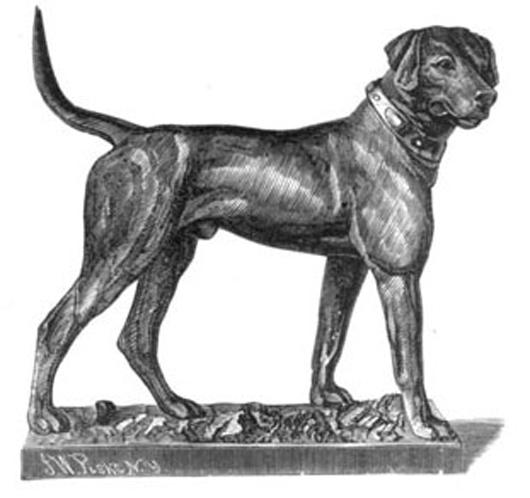
|
| An engraving of a zinc dog sculpture, reportedly found in a J. W. Fiske & Co. catalog. According to their Wikipedia page, Fiske "was the most prominent American manufacturer of decorative cast iron and cast zinc in the second half of the nineteenth century." (Located at Live Auctioneers website) |
Robert Bartley1 pointed out to this author early on in his research that what appear to be similar or identical examples of the Tippecanoe City Iron Dog could be found relatively easily with a simple Internet search. For example, a dog on display in Johnstown, PA, "Morley's Dog", appears identical to the Tippecanoe City Iron Dog. Notably, as part of a fundraiser several years ago, several fiberglass replicas were created, sold and placed around Johnstown.2
The conservator that performed the restoration on Morley's Dog is Tom Podnar;3 he works for McKay-Lodge in Cleveland, Ohio. In addition to the dog in Johnstown, Podnar has also restored an identical dog for The Henry Ford Museum in Michigan, and another for a private owner.
In her authoritative work, Zinc Sculpture in America, 1850-1950,4 author Carol Grissom writes:
During the eighteenth century, estates of the wealthy in America had been decorated in the English manner with statues of animals, such as the pair of stone lions that flanked the doorway of Cliveden in Philadelphia. By 1850 domestically made cast-iron animal statues became available, mainly deer, dogs, and lions, and by 1858 many of the same designs were sold in zinc by Janes, Beebe & Co. Zinc animals became so popular that entire catalogues devoted to them were published by the J. W. Fiske Iron Works. The few zinc animals imported from Europe were also prominently placed, including lions, griffins, and deer purchased in Berlin in 1872 for entrance gates to St. Louis's Tower Grove Park.
Many zinc animals were displayed in pairs, while others were scattered across lawns in a naturalistic manner. The grounds of the National Park Seminary, a finishing school for young women near Washington, DC, had no fewer than six pairs of animals flanking entrances to buildings, stairways, and bridges that crossed a campus ravine. A deer also reclined in the grass and an eagle stood atop a post at a secondary entrance at the school. Nonetheless, animal statues were probably most often purchased for the grounds of private estates, where they were meant to convey "in no unmistakable manner the social position of their owners...the immediate nearness of affluence and wealth...of taste and of quality." Many have remained in private hands, but one - Morley's Dog - became the mascot of Johnstown, Pennsylvania, after its donation to the city in 1944. Public buildings often sport the eagle symbol of the United States, and sheet-zinc Griffins decorate the Peoria Waterworks.
Grissom cites several examples of dogs similar or identical to the Tippecanoe Iron Dog, including examples in Fort Wayne, Indiana; Dearborn and Monroe, Michigan; Princeton, New Jersey; Dayton, Ohio; Johnstown, Pennsylvania; and Houston, Texas.5 In addition, Grissom has identified a number of potential makers and/or suppliers of the dogs, including Kirtland, Mott, Gould Bros and Dibblee, Fiske, and Barnum and Smith.6
Given the number of dogs that can be found via online search and elsewhere, as well as their very strong resemblance to the Tippecanoe City Iron Dog, it seems clear that Van Eli Crane did not make the dog in a foundry in Port Huron, Michigan. He must have purchased the dog from a maker such as J. W. Fiske and Co. This does not, on its own, disqualify other portions of the Tippecanoe Iron Dog's story. But at the same time, if this very critical portion of the Tippecanoe Iron Dog's story is untrue, it does beg the question as to whether other important parts of the account may also be false.
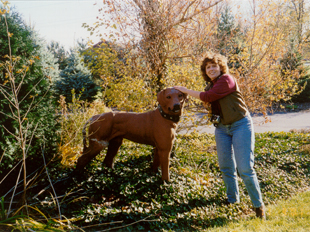
|
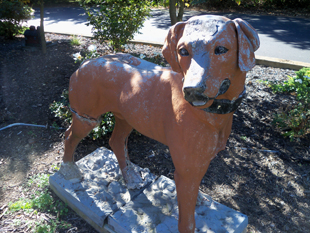
|
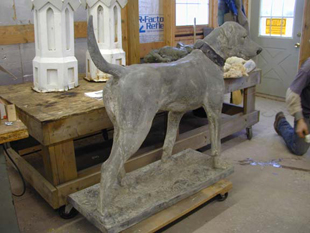
|
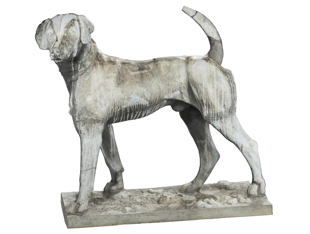
|
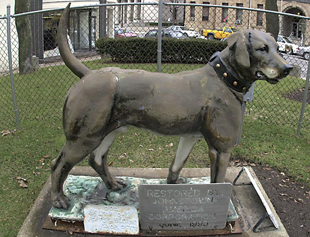
|
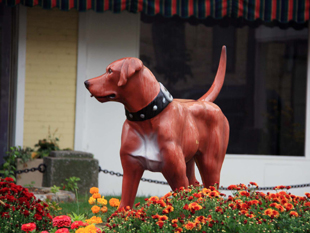
|
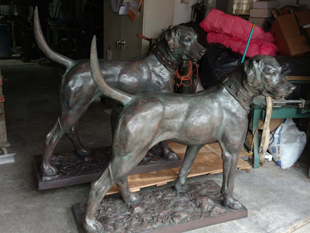
|
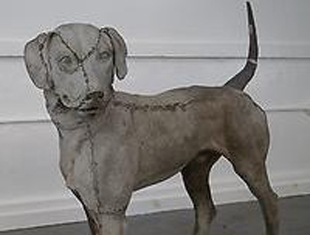
|
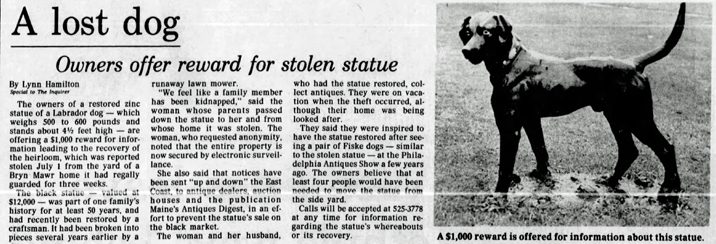
|
|
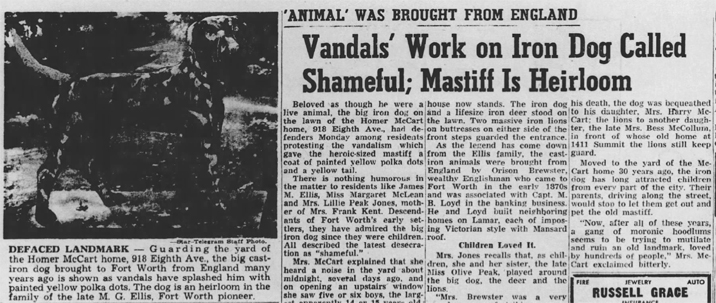
|
|
|
First row: (L) The Tippecanoe Iron Dog with Mary Fair Renner, ca. 2007 (Author's collection).
(R) The Tippecanoe Iron Dog on September 5, 2020, moments before being moved
from the property where it likely sat for more than a century (Courtesy Robert Bartley). Second row: (L) Dog reportedly near Dayton, Ohio. This is not the Tippecanoe Iron Dog, even though the two cities are only a few miles apart (Courtesy Carol Grissom). (R) The dog at The Henry Ford Museum in Dearborn, Michigan (Located at The Henry Ford Museum website). Third row: (L) "Morley's Dog" in Johnstown, Pennsylvania (Located at The Tribune-Democrat website). (R) Fiberglass replica of "Morley's Dog", also in Johnstown, Pennsylvania (Located at the Waymarking website). Fourth row: (L) A pair of dogs restored by Masterworks Studios in Missouri (Located at the Masterworks Studios website). (R) Zinc dog, as of this writing, for sale online for $39,500.00 (Located at the Bucks County Estate Traders website). Fifth row: A dog in Bryn Mawr, Pennsylvania, reported stolen in 1989. (From the Philadelphia Inquirer, Philadelphia, Pennsylvania, July 20, 1989, located at Newspapers.com). Sixth row: A Fort Worth, Texas dog reported as vandalized with yellow paint in 1947. (From the Ft. Worth Star-Telegram, Fort Worth, Texas, November 11, 1947, located at Newspapers.com). Some additional photographs of the dog are here. |
|
![[The Iron Dog, ca. 2008]](images/1300_720.jpg)